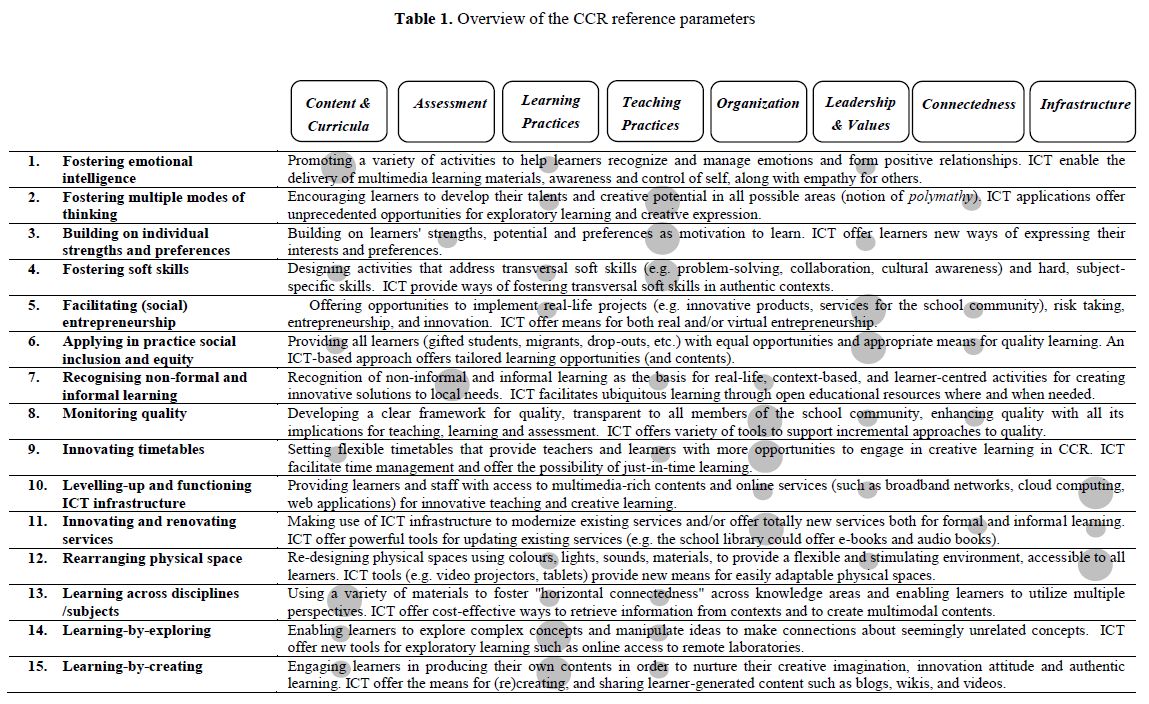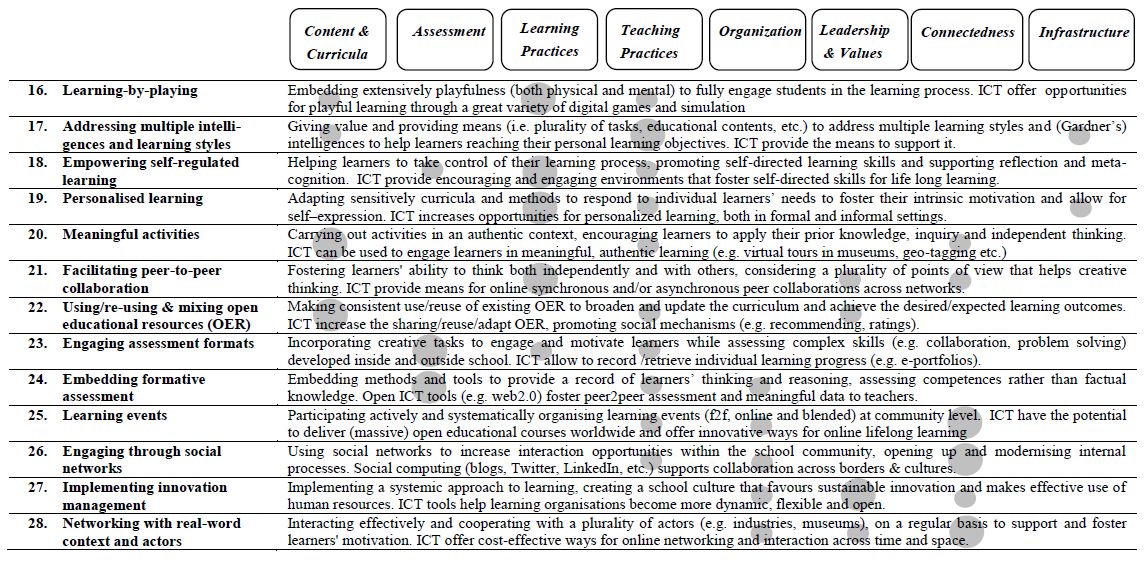歐盟創新教室『Creative Classrooms』簡介
作者: 塾長 日期: 2015-09-06 16:20
本篇簡介歐盟前瞻科技研究學院(Institute for Prospective Technological Studies(European Commission))對於創新教室的介紹,參考文章是『Creative Classrooms_A Systemic Approach for Mainstreaming ICT-enabled Innovation for Learning in Europe』與簡報。
首先簡譯其摘要與介紹:
歐洲2020戰略(Europe 2020)旨揭,如果要讓歐洲保持競爭力以克服當前的經濟危機,並抓住新的機遇,教育和培訓(E&T)必須要有根本性的轉變才能具備新的技能和能力。為了推動ICT創新,需要在系統層面,有個全面的方法來情境化過程~標識創新的學習環境,充分嵌入ICT潛力的關鍵維度(以下簡稱“Creative Classrooms~創新教室”或CCR),以提供複雜性之理由,還有實踐教育體系化改變轉移之優先性。
『創新教室(CCR)』的概念是創新的學習環境,充分嵌入資通訊科技(ICT)潛力,在正規和非正式場合中,都能支持創新的學習與教學實踐。『創新教室』的多維度概念由8個相互關聯之關鍵面向組成,並且為了支持實驗和實施,提出了一組28個參考參數(“積木”)。這樣做的目的有兩個:1.解開CCR多面向概念的創新元素及2.用來描述橫跨整個歐洲的創意教室之可永續實施和漸進成為主流的系統方法。
文中常提到creative和innovative同義性高,比較利用creative於learning,而innovative用於teaching,所以我認為把Creative Classrooms稱為創新教室比較能涵蓋其意。接著介紹8個關鍵面與28個blocks。我先整理詞語與相關資料連結,需要時各位再細看整理喔!
8個關鍵面,也是我們看當前教育現場的熟悉樣貌:
1.內容和課程(Content and curricula)
2.評量(Assessment)
3.學習實踐(Learning practices)
4.教學實踐(Teaching practices)
5.組織(Organization)
6.領導力與價值觀(Leadership and Values)
7.連通性(Connectedness)
8.基礎設施(Infrastructure)

28個blocks,我喜歡文中圖、表的整理
1.培養情緒智商(Fostering emotional intelligence)
2.促進多模式思考(Fostering multiple modes of thinking)
3.建基於個人的特長和愛好(Building on individual strengths and preferences)
4.培養軟技能(Fostering soft skills)
5.推動(社會)企業家精神(Facilitating (social) entrepreneurship)
6.實踐社會包容性和公平性應用(Applying in practice social inclusion and equity)
7.認識非正規和非正式學習(Recognising non-formal and informal learning)
8.監測品質(Monitoring quality)
9.創新時間表(Innovating timetables)
10.提昇和功能化ICT基礎設施(Levelling-up and functioning ICT infrastructure)
11.創新和改造服務(Innovating and renovating services)
12.重新排列物理空間(Rearranging physical space)
13.跨學科/科目學習(Learning across disciplines /subjects)
14.探索中學習(Learning-by-exploring)
15.創建中學習(Learning-by-creating)
16.遊玩中學習(Learning-by-playing)
17.形塑多元智能和學習風格(Addressing multiple intelligences and learning styles)
18.賦權自主學習(Empowering self-regulated learning)
19.個人化學習(Personalised learning)
20.有意義的活動(Meaningful activities)
21.促進同儕協作(Facilitating peer-to-peer collaboration)
22.使用/重複與混用開放式教育資源(OER) (Using/re-using & mixing open educational resources (OER))
23.著重評量形式(Engaging assessment formats)
24.嵌入形成性評價(Embedding formative assessment)
25.學習活動(Learning events)
26.透過社會網絡行動(Engaging through social networks)
27.實施創新管理(Implementing innovation management)
28.將現實世界的脈絡與角色網絡化(Networking with real-word context and actors)

 |  |
最後,還有個資訊圖表(pdf),也值得細看喔!

 訂閱
訂閱 上一篇
上一篇 返回
返回 下一篇
下一篇


